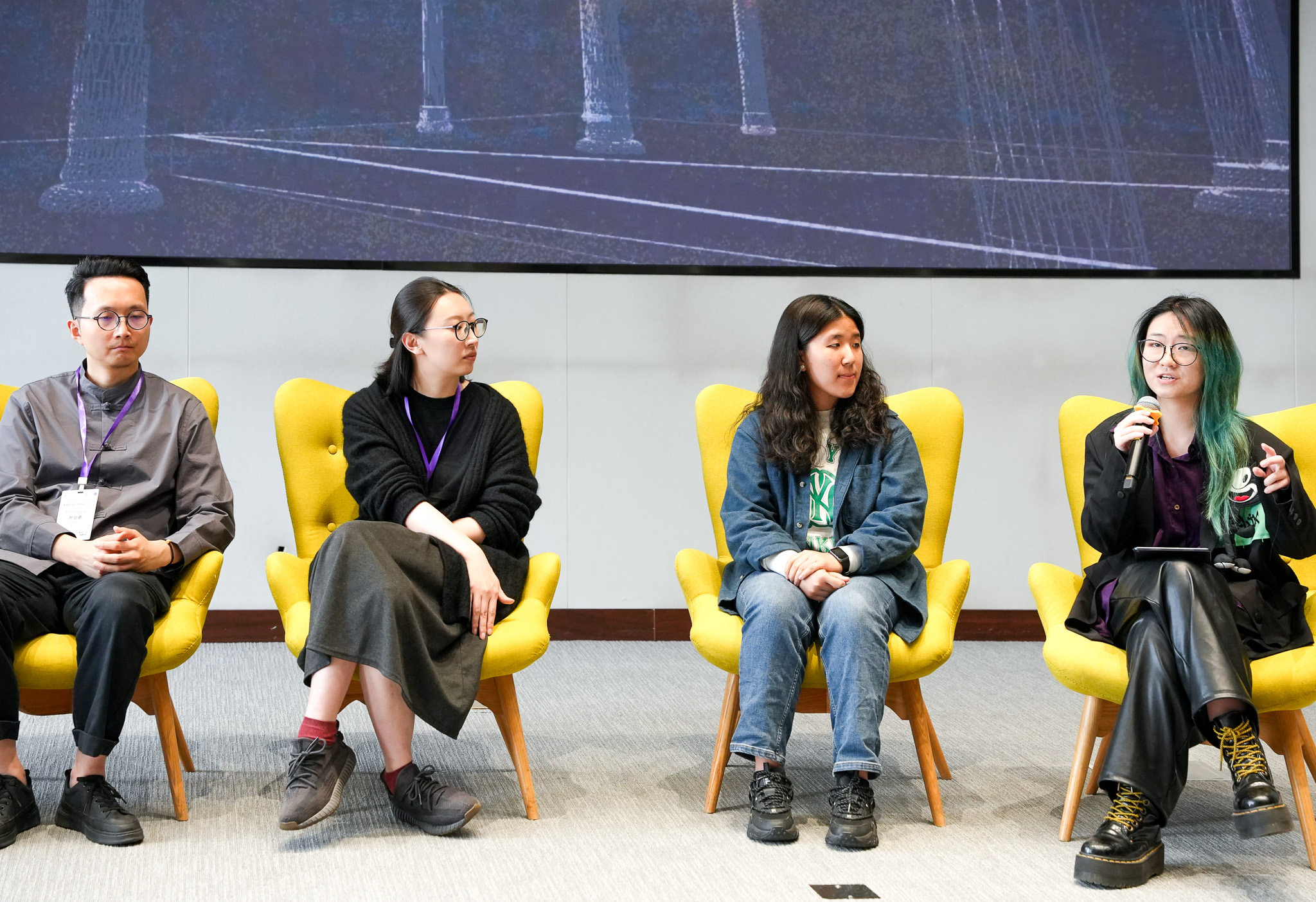
Earlier this spring the auditorium at NYU Shanghai was packed with what some might consider an odd pairing: scholars of cultural heritage and enthusiastic gamers. The talk by Qi Xuehui, lead art director of one of the world’s top-grossing mobile games, Genshin Impact, discussed how Chinese cultural heritage shaped the game’s visual and spatial design—an approach that led to global cultural phenomenon and the first original Chinese-made game to win Best Mobile Game at The Game Awards.
The lecture was part of a larger three-day symposium on Cultural Heritage in the Digital Age, held April 25–27 and jointly organized by NYU Shanghai’s Digital Heritage Lab and Center for Global Asia, with support from the Global China Studies and Interactive Media Arts. The event brought together researchers, practitioners, students, and industry professionals to explore how heritage is preserved, represented, and reimagined in digital environments.
Key organizers included Associate Professor of Art History and Director of the Digital Heritage Lab Lala Zuo, Clinical Assistant Professor of Interactive Media Arts Ian Zhang Xingchen, and Associate Professor of Global China Studies and Director of the Center for Global Asia Lena Scheen.

The symposium’s packed schedule included keynotes, panel discussions, industry talks and roundtable discussion, pop-up VR exhibitions, and site visits. “This was a first in China, probably in the world, for our field,” Zuo said. “Bringing professors, students, and practitioners into the same room to discuss digital heritage—across research, education, exhibition, and industry—at this scale, with this intensity and thematic breadth, had never been done before. ”
In recent discussions with colleagues from several leading Chinese universities, Zuo observed that as the intersection of culture and technology rapidly expands, Chinese academia lacks formal spaces and common frameworks to engage with and publish work in this emerging field.
“Fields like architecture, archaeology, and art history are just beginning to confront what it means to go digital,” she said. “The work is so new that its academic value, theoretical foundations, and evaluation criteria are all still taking shape. That’s exactly why we need cross-disciplinary conversations.”
Zuo noted that digital heritage must inevitably incorporate new devices, new technologies, and public engagement. That’s why the event invited professionals from outside academia—and included not only presentations but also immersive experiences.

A central aim of the symposium was to provide undergraduates with a platform to share research—and to help them envision their future roles in academia, museums, research institutions, or tech companies.
Students weren’t just attendees—they were also active participants: speaking on panels, setting up the exhibitions, organizing logistics, designing the symposium’s visuals, documenting the event, and guiding field visits. Of the 29 student speakers, 19 were undergraduates, making up nearly 30% of presenters—an uncommon figure for a research-oriented academic event.
Keynote speaker Professor Li Zhirong, deputy director of Zhejiang University’s Institute of Cultural Heritage and co-head of its digital heritage team said she was impressed with the students’ involvement. “Young people pour so much energy into heritage work,” she said. “This is the most powerful form of revitalization we can ask for.”
Li said that joint-venture universities like NYU Shanghai are particularly well-suited to explore new paradigms for the humanities in a technology-saturated age. “NYU Shanghai’s international and Chinese faculty are seizing the new crossroads in the humanities. Cultural heritage is the perfect entry point: it links history with the present, tradition with the future.”
Professor Li and others shared case studies highlighting the benefits and limitations of technology use in cultural heritage preservation.
Zhejiang University’s team, which has completed over 220 digitization projects and amassed more than 500 terabytes of data, has nevertheless found some constraints of technology use.
“Sunlight, old wood, narrow alleyways—once you try to recreate them digitally, you realize how impossible it is,” she said. “The deeper you go into digital worlds, the more irreplaceable the real one feels.”
But, she said, technology can play an important role in historical preservation. “Preserving heritage starts with valuing history,” she said. “Digitalization isn’t about crafting a perfect virtual replica. It’s about using current technology to document, enrich, and interpret the past with care. Though the digital seems immaterial, it can do serious, lasting work—serving today, and leaving something meaningful for tomorrow.”

